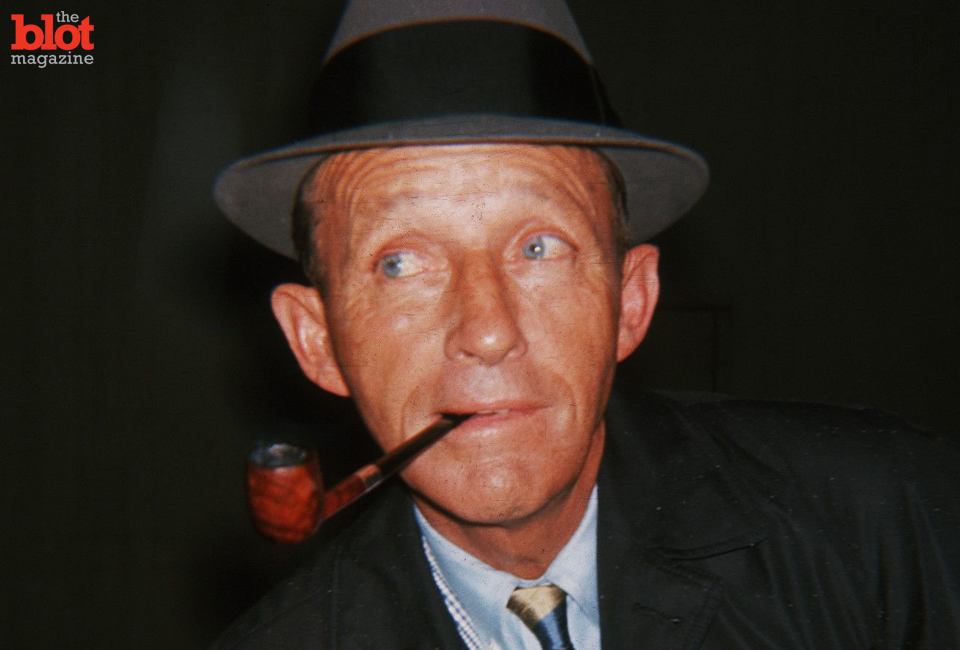
Bing Crosby was an entertainer who conquered radio, film and the recording industry — and made it look easy, epitomizing laid-back cool all the while. The celebrated crooner not only transformed the American music scene in his day, he also played a pivotal role in the creation of the American buddy road movie.
For the uninitiated (living in a cave, perhaps), Crosby is best known for his version of the Irving Berlin song “White Christmas.” The tune, made famous in the film “Holiday Inn” (1942), and again in “White Christmas” (1954) is the bestselling single of all time, beating out Elton John’s 1997 rendition of “Candle in the Wind.” The holiday classic left an indelible impression on the soul of American Christmas, which is still going strong more than half a century later.
Crosby’s niece, Carolyn Schneider, who lived with the singer’s family for a time, recalls how “Uncle Bing” would often call her to breakfast in a “sing-songy way.” And come Christmastime, he would close down the family festivities by singing “White Christmas” “standing by the piano that was given to him from the movie ‘High Society,’” she told TheBlot Magazine. How’s that for a Yuletide experience to beat?
Yet Bing was so much more than “White Christmas.” The man was a trendsetter. “Bing was entranced by jazz from the very start, as early as 1921 and 1922,” Bill Stimson relayed to TheBlot. Stimson is a professor from Crosby’s hometown of Spokane, Wash., who’s penning a book on Bing’s pre-Hollywood years. “Most people hadn’t even heard of jazz that early. Bing decided it was the art he wanted to pursue.”
Crosby’s first love was the drums, which he started playing with a local Spokane band, The Musicaladers, while enrolled at Gonzaga University. (He eventually dropped out in order to pursue entertainment.) If he’d had his druthers, he could have very well finished up his career as a jazz drummer — but the world just couldn’t get enough of his vocal stylings, defined, as Stimson pointed out, as, “Hip-crooning. The hybrid he created. The vocal version of swing.”

Tony Bennett, passing by Spokane’s Bing Theater (where Crosby kicked off his career — although it wasn’t named Bing at the time) on the way to a gig some years back, remarked about how Bing was the one who “started it all” for “those of us who were crooners,” and that he was the “best of the best.” Bennett, Sinatra and others have acknowledged the fact that Crosby was the man they wanted to be.
Apart from his pioneering vocal style, Crosby also helped shape the cinema. The buddy road movie of today owes an awful lot to the Bing Crosby and Bob Hope road movies of yesterday. Films like “The Road to Singapore” and “The Road to Morocco” set the stage for latter-day classics, such as “Butch Cassidy and the Sundance Kid,” “Rain Man” and “Thelma & Louise.” Even the “Harold & Kumar” movies owe a little something to the misadventures of Crosby and Hope.
The comedy duo, along with their ever-present onscreen love interest Dorothy Lamour (except for “The Road to Hong Kong”), ended up creating a 22-year film “bromance” half a century before the term had even been coined.
The premise of the films, while not always politically correct by today’s standards, was almost always the same. Two guys hit the road and inevitably run into the girl (Lamour), tussle over her in a bantering manner, sing a few songs and ultimately strengthen their friendship.
Life “on the road” — to borrow a title from Jack Kerouac — afforded Crosby, the crème de la crème of crooners, and Hope, the king of comedic one-liners, the literal and emotional spaces needed to develop their enduring cinematic relationship.
Bill Stimson believes the lasting attraction of the road flicks comes down to “how men, who are embarrassed at being too palsy, actually talk to each other — an ongoing verbal wrestling match with no real hostility.”
The best place to catch Crosby, of course, is in a theater. Luckily, that’s still possible. Every December, the Bing Crosby Advocates stage the Bing Crosby Holiday Film Festival at Spokane’s Bing Crosby Theater — on the very same stage where the actor first perfected his craft. This year’s event takes place Saturday, Dec. 13 from 11 a.m. – 10:30 p.m. You could very well overdose on all things Bing, as road movies, “White Christmas” and other films are on offer for fans to enjoy. As many a festival filmgoer knows, Crosby’s cinematic charm really pops and comes to life on the big screen.
Carl Pettit is a contributing journalist for TheBlot Magazine.






7 Comments
Leave a Reply